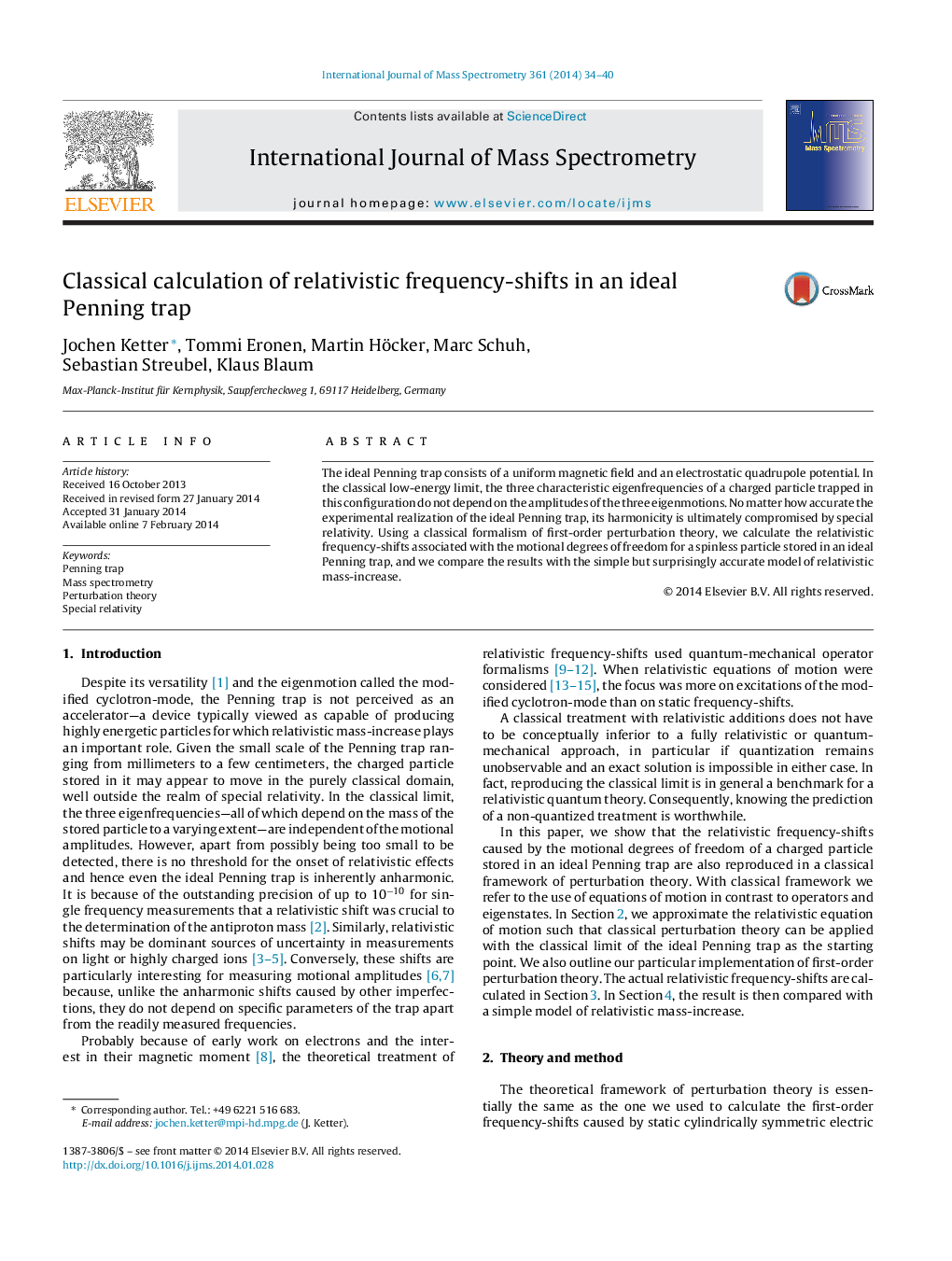| Article ID | Journal | Published Year | Pages | File Type |
|---|---|---|---|---|
| 1193243 | International Journal of Mass Spectrometry | 2014 | 7 Pages |
•We deal with relativistic frequency-shifts in an ideal Penning trap.•We approximate the relativistic equations of motion of a charged particle.•We apply classical perturbation theory to calculate the frequency-shifts.•We compare the results with literature ones obtained via operator formalisms.•We compare the first-order result with a model of relativistic mass-increase.
The ideal Penning trap consists of a uniform magnetic field and an electrostatic quadrupole potential. In the classical low-energy limit, the three characteristic eigenfrequencies of a charged particle trapped in this configuration do not depend on the amplitudes of the three eigenmotions. No matter how accurate the experimental realization of the ideal Penning trap, its harmonicity is ultimately compromised by special relativity. Using a classical formalism of first-order perturbation theory, we calculate the relativistic frequency-shifts associated with the motional degrees of freedom for a spinless particle stored in an ideal Penning trap, and we compare the results with the simple but surprisingly accurate model of relativistic mass-increase.
Graphical abstractFigure optionsDownload full-size imageDownload high-quality image (225 K)Download as PowerPoint slide
